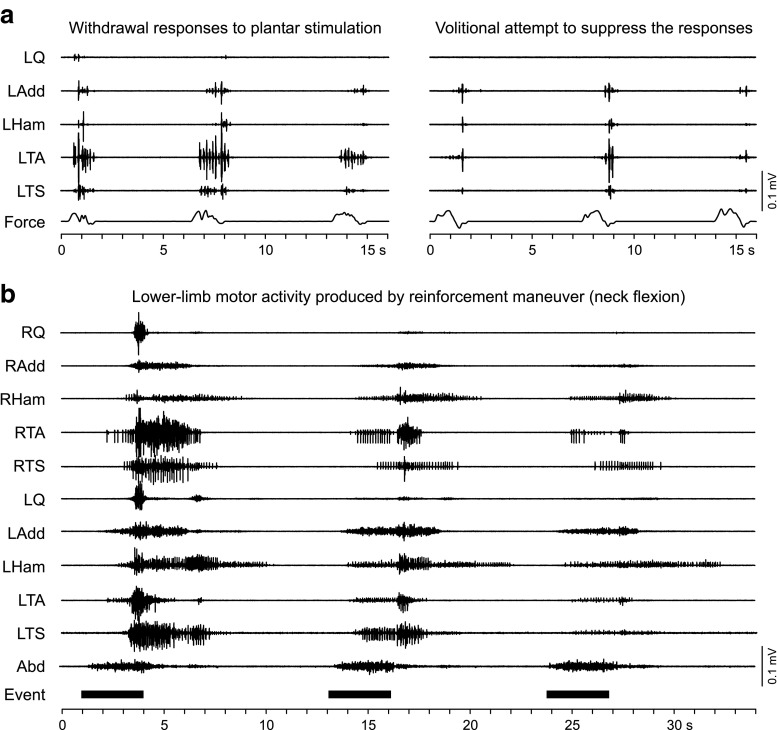Fig. 4.
Neurophysiological evidence for residual translesional inhibitory and excitatory influence in individuals with clinically motor complete spinal cord injury. (a) Withdrawal responses evoked by stroking the left foot sole and its voluntary suppression (patient 4 in [51], classified as American Spinal Injury Association Impairment Scale (AIS) grade B; neurological level of injury: C8). The bottom trace (Force) is a strain gauge registering the force exerted as the stimulating probe was drawn along the plantar surface. (b) Delayed and widespread activation of paralyzed lower limb muscles by forceful isometric neck flexion performed with the patient in the supine position (patient 3 in [51], AIS grade B; neurological level: T9). Three repetitions are denoted by the event marker, and by the electromyographic activity in the abdominal (Abd) muscles. Note the supraspinally induced non-specific activation of muscles that could not be activated by volitional single- or multijoint motor tasks. Q = quadriceps; Add = adductors; Ham = hamstrings; TA = tibialis anterior; TS = triceps surae

